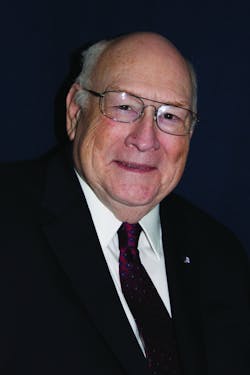Recently a good businessman shocked me with a question. “Airports,” he asked, “don’t change much, do they?”
Of course airports change. Why do airports change? Let me count the ways. These are all changes I remember, so they start in the 1950s.
In the beginning airliners were piston powered by huge, smoke-belching, noisy engines turning big propellers. They neither climbed nor cruised fast or high. Oh but they had lovely names like Convair, Martin, Douglas, Boeing, and Constellation. Trips were bumpy and airsick bags were oft utilized. The greatest of these aircraft was the Lockheed Constellation — fondly called the Connie. My father rode in one and came back to announce, “Three hundred miles per hour and just as smooth as silk.” I was awed.
Jet airliners came next and took over the airline industry in spite of the tragic crashes of the first jet airliner, the de Havilland Comet. Many people vowed that they would never fly in a jet — but they did. The smoothness, speed, and comfort convinced them.
One airline, Eastern, stuck with their piston-powered airliners. Eastern, led by World War I ace Capt. Eddie Rickenbacker, was the first American airline to operate profitably without guvmint subsidies. Captain Eddie saw no reason to switch to more expensive jets, and he was dead wrong. He was pushed out of the company in 1959.
The jets, of course, led to many airport changes, including longer runways and larger terminals — as more passengers flew more places.
The hub and spoke system was started in 1955 by Delta in Atlanta. Decades later I wrote a poem dedicated to airline passengers in the Southeast. The beginning was, “Airlines will take you to thousands of places. They go everywhere and they cover all bases — but first, you must go to Atlanta.” I won’t bother to try to explain the hub and spoke system to airport managers. You know the pros and cons, and it does seem to be here to stay.
The Airline Deregulation Act of 1978 eliminated much of the guvmint’s regulation of the airline market place. Since then the airlines have flown more people more safely for less money and airlines have become the tool of the masses. Still, some people believe to this day that dereg was the source of all airline problems.
Air traffic controllers went on strike in 1981. Reagan fired the entire bunch. For awhile there, it was nip and tuck, but airlines and airports survived and thrived.
Up ‘til now I haven’t mentioned airport security. Anyone could go most anywhere at any airport, and we thought that would last forever. Problems — culminating with 9/11/01 — brought that to a screeching halt. We who watched this on TV will never forget it.
September 11 caused the biggest changes in airports in my lifetime. Airports became bewildering, confusing, and downright miserable in the aftermath. OTOH, thanks to people like you — airports did adapt and return to normal, but it was a new normal.
I think you’ve done a damned good job of handling the risk.

